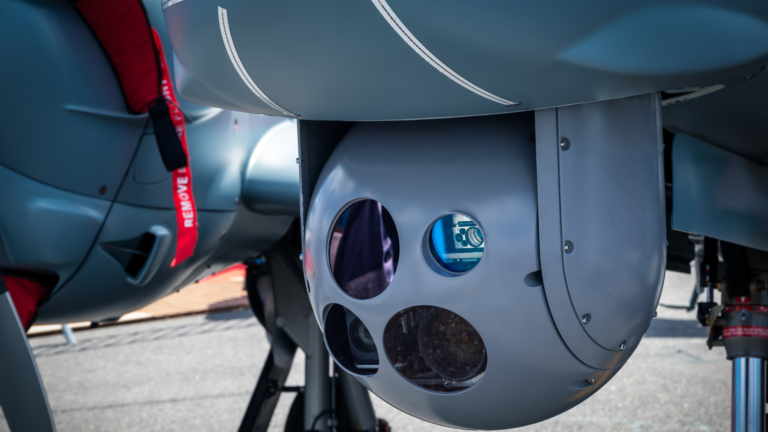Forward Looking Infrared Technology An In-Depth Overview
Introduction
Forward-Looking Infrared (FLIR) technology, commonly referred to as thermal imaging, is an advanced system that has significantly transformed numerous sectors, such as law enforcement, military operations, wildlife preservation, and disaster response.
By answering the question, “What is FLIR?”, this article delves into the intricacies of FLIR, exploring its design and properties, tracing its historical evolution, and examining its various practical applications and costs. Additionally, it highlights real-world examples, with a special emphasis on its critical role in police operations.
Etymology
Forward Looking Infrared Imaging (FLIR) technology garners its name from the specific functionalities it offers. The term “forward-looking” signifies the system’s capacity to generate real-time infrared imagery, providing operators with a capability akin to a “frontal visual reconnaissance” of their surroundings, a vital feature in many military operations.
The “infrared” in FLIR refers to the particular range of the electromagnetic spectrum it leverages, specifically, wavelengths longer than those of visible light yet shorter than microwaves. This domain is not perceivable by the naked human eye, granting FLIR an essential characteristic for operations in low-visibility environments or nocturnal conditions common in military usage.
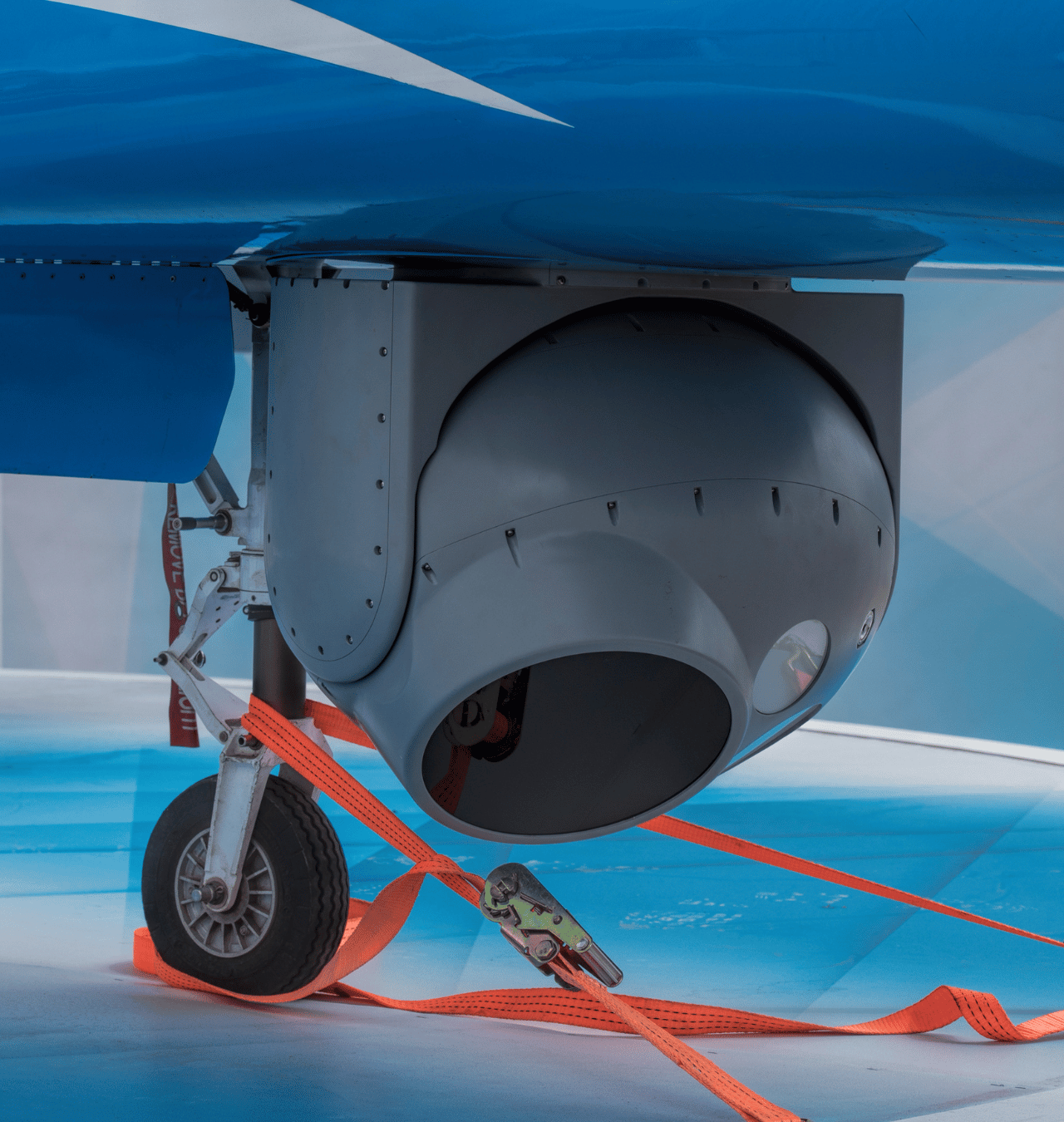
Design
The design of Forward Looking Infrared (FLIR) technology, while complex, underscores its profound efficacy in various fields, particularly military operations. At the heart of this technology is the detector array, generally comprised of either microbolometers or cooled infrared detectors.
Microbolometer-based devices, a type of uncooled thermal sensor, detect heat emissions from objects rather than light. This functionality provides a crucial advantage in that it simplifies the overall design and reduces costs. As a result, these devices are widely used in numerous applications, including handheld military-grade devices and Unmanned Aerial Vehicle (UAV) payloads.
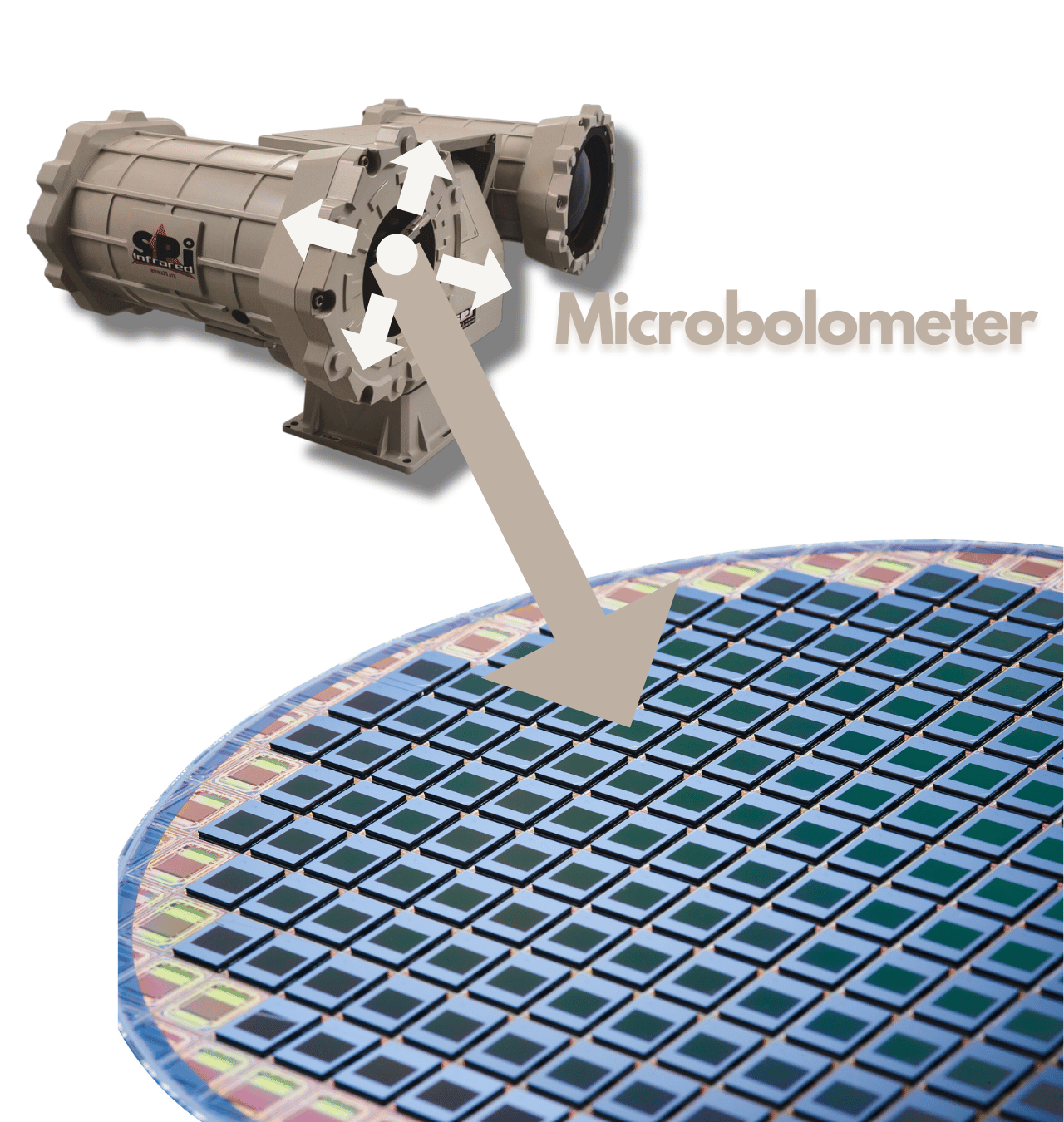
Conversely, cooled infrared detectors provide superior performance in terms of sensitivity and image quality. However, they necessitate intricate cooling systems to maintain the detector at cryogenic temperatures. Despite the complexity and cost, these systems are indispensable for critical military applications, such as long-range surveillance and high-altitude reconnaissance, where high sensitivity and precision are paramount.
Thermal Spectrum
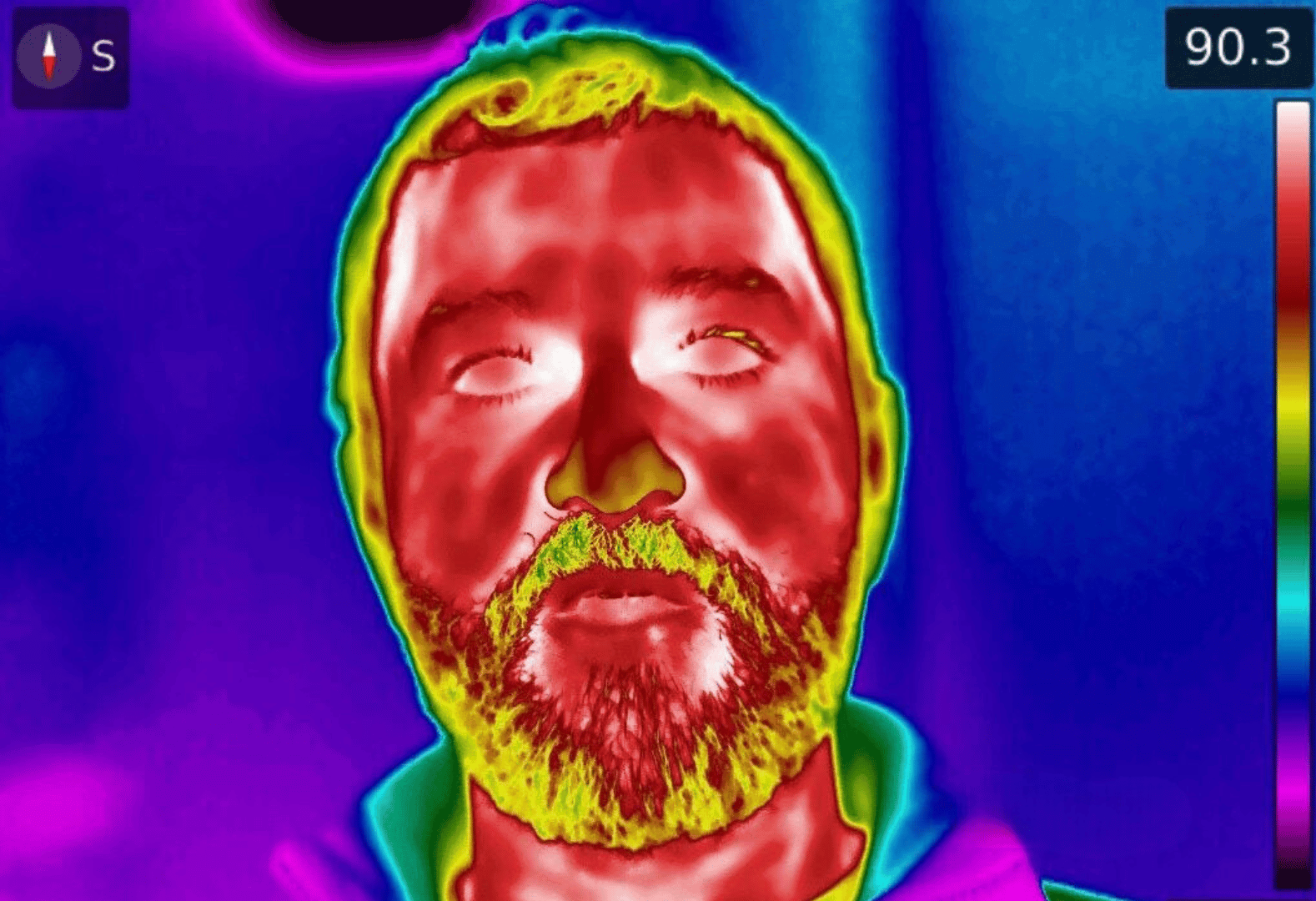
The thermal data gathered by these detectors is processed and translated into electrical signals. These signals are then converted into an intelligible visual image, with colors typically representing the thermal spectrum. Hence, warmer objects stand out as brighter or differently colored, allowing easy identification amidst cooler backgrounds. This capability to discriminate thermal signatures is particularly beneficial in tactical military scenarios where the detection of human or mechanical heat emissions is critical for mission success.
Properties
FLIR technology showcases unique properties that afford it a strategic edge over traditional vision-based systems, particularly in conditions of reduced visibility. The foundational attribute of FLIR is its ability to capture and visualize the thermal signatures of objects, a feature that finds extensive application in various fields, especially military and law enforcement.
Forward Looking Infrared operates in the infrared portion of the electromagnetic spectrum, specifically in the long-wavelength infrared (LWIR) band that ranges from 8 to 14 micrometers. This region of the spectrum is strategically chosen because the atmosphere’s transmission of infrared radiation is relatively high (low absorption) in this band, and all objects near room temperature emit strongly in this range.
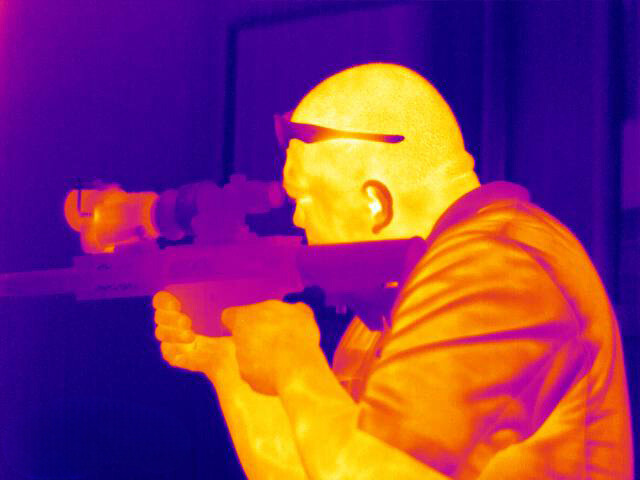
One of the distinguishing characteristics of FLIR technology is that it is passive; it does not need any external illumination or emitted signal. Instead, it works by detecting the infrared radiation naturally emitted by objects. This attribute allows FLIR to operate in complete darkness and makes it covert – a crucial property for military applications where stealth is paramount.
FLIR’s effectiveness hinges significantly on the difference in temperature between the object of interest and its surrounding environment, termed as thermal contrast. A higher thermal contrast leads to clearer images and more accurate detection and identification. This is particularly pertinent in military and security scenarios where quick and accurate threat detection can be a matter of life and death.
Lastly, Forward Looking Infrared’s capacity to function unaffected by atmospheric obscurants like smoke, fog, or dust offers a clear operational advantage. Visible light can be heavily scattered or absorbed by such elements, greatly reducing the effectiveness of traditional optical systems. In contrast, FLIR systems can ‘see’ through these obscurants by detecting the thermal signatures, offering reliable performance in adverse environmental conditions. This feature is especially critical in military or first-responder situations, where operations often take place in challenging and unpredictable environmental scenarios.
History
The fundamental concept behind FLIR technology – the existence of infrared radiation – was first discovered by Sir William Herschel in 1800. Herschel conducted an experiment with a prism and thermometer, revealing that the temperature increased towards the red end of the visible light spectrum and beyond, thus discovering the existence of infrared radiation.
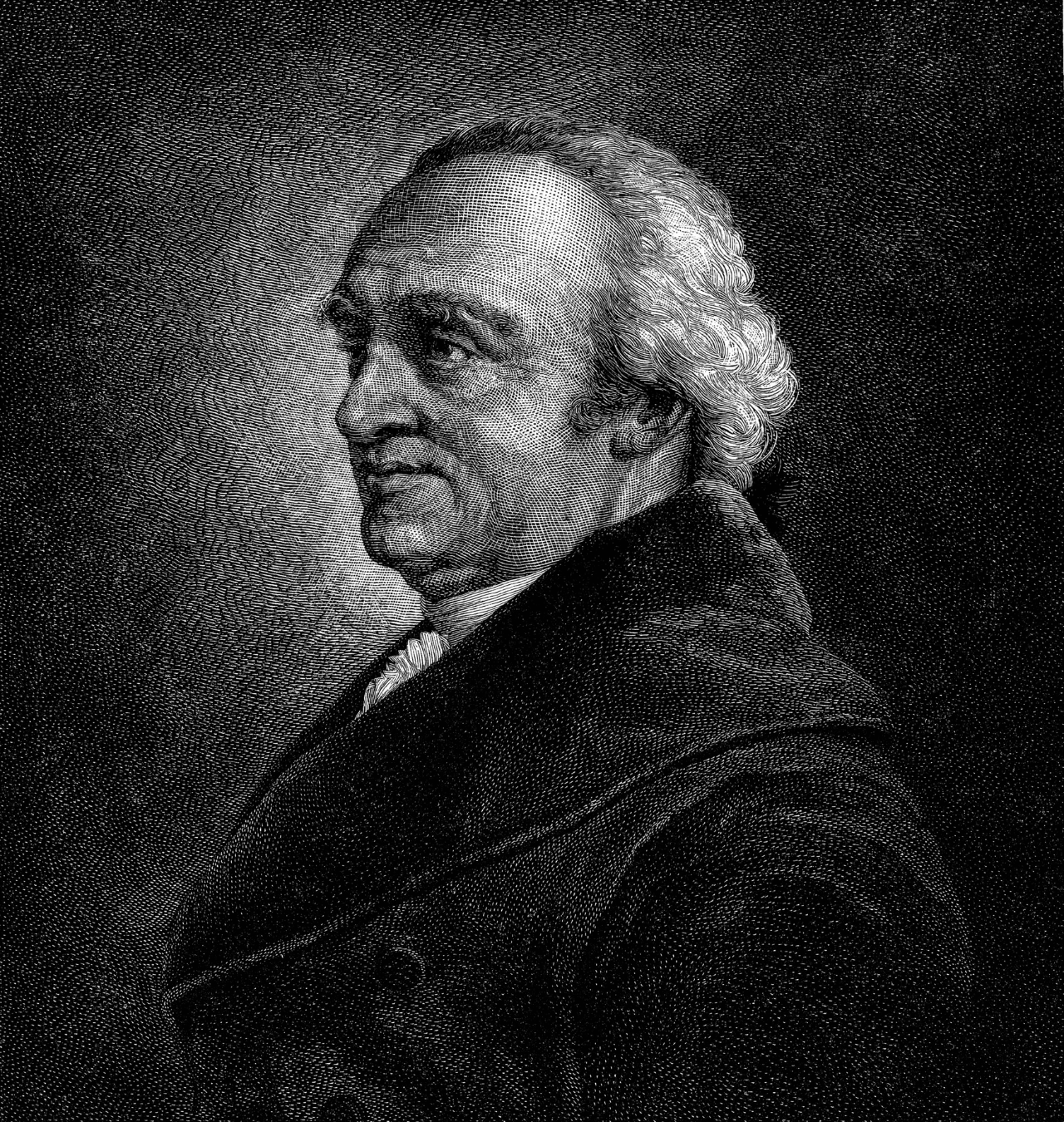
However, it wasn’t until the mid-20th century that infrared technology began to find significant practical application. During World War II, the first infrared viewing devices were used. These ‘sniperscopes’ or ‘snooperscopes’ were used by infantry to detect enemies via their infrared emissions.

The Korean War saw further advancement and utilization of infrared technology, with devices like the M2 Infrared Sight and the T120 Sniperscope. They were employed in night warfare for surveillance and target acquisition, paving the way for modern night vision devices.
FLIR technology itself was born during the Cold War in the 1960s. Early Forward Looking Infrared systems were rudimentary and had relatively low resolution. They were primarily used by the U.S. Navy for night-time and over-the-horizon targeting and surveillance. One such system was the AN/AAS-21, an airborne FLIR system used in maritime patrol aircraft for anti-submarine warfare.

The 1980s and 1990s saw significant advances in FLIR technology, including the introduction of second-generation FLIR systems. These systems employed more advanced detector materials and signal processing techniques, resulting in higher resolution, better image quality, and improved detection ranges. An example is the TOW-2B Aero missile system, which utilized second-generation FLIR technology.
In the 21st century, FLIR technology became even more sophisticated, with third-generation FLIR systems delivering multispectral imaging capabilities and even higher resolution. These systems utilized advanced staring focal plane array detectors, enabling simultaneous imaging at multiple infrared wavelengths.
In contemporary times, Forward Looking Infrared technology has become more compact and affordable, leading to an expansion of its uses beyond military applications. Today, FLIR systems can be found in various sectors, from law enforcement and search-and-rescue operations to wildlife conservation and building inspection.
Uses
FLIR technology is now used in various fields:
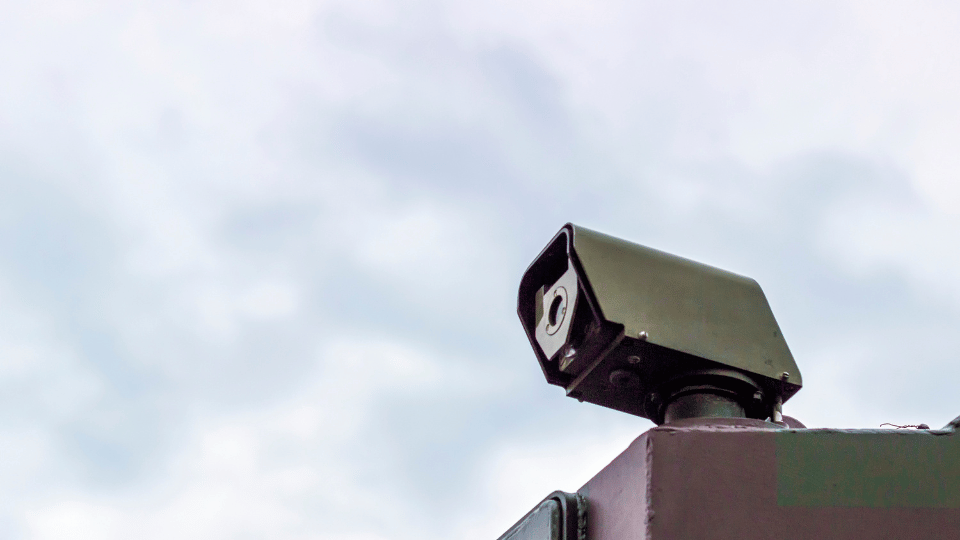
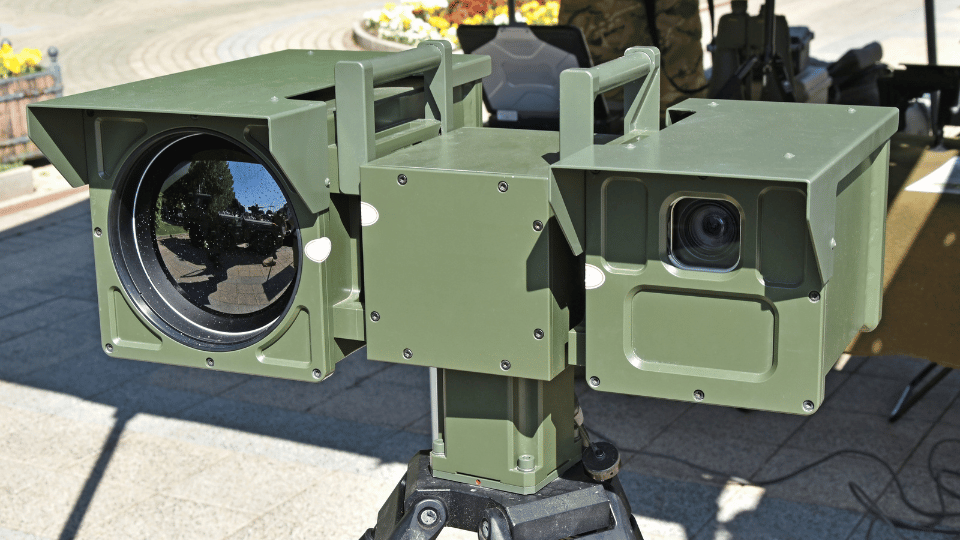
- Military and law enforcement: FLIR is utilized for surveillance, reconnaissance, target identification, and navigation, particularly in low-light or obscured conditions.
- Search and rescue: Emergency services use FLIR to locate lost or stranded individuals in challenging environmental conditions.
- Maritime navigation: Ships employ FLIR for navigation, especially during the night or in foggy conditions.
- Building inspection: FLIR can detect thermal irregularities in buildings, indicating insulation issues or water damage.
- Medical use: Some medical applications include fever screening and detecting poor blood circulation.
Cost
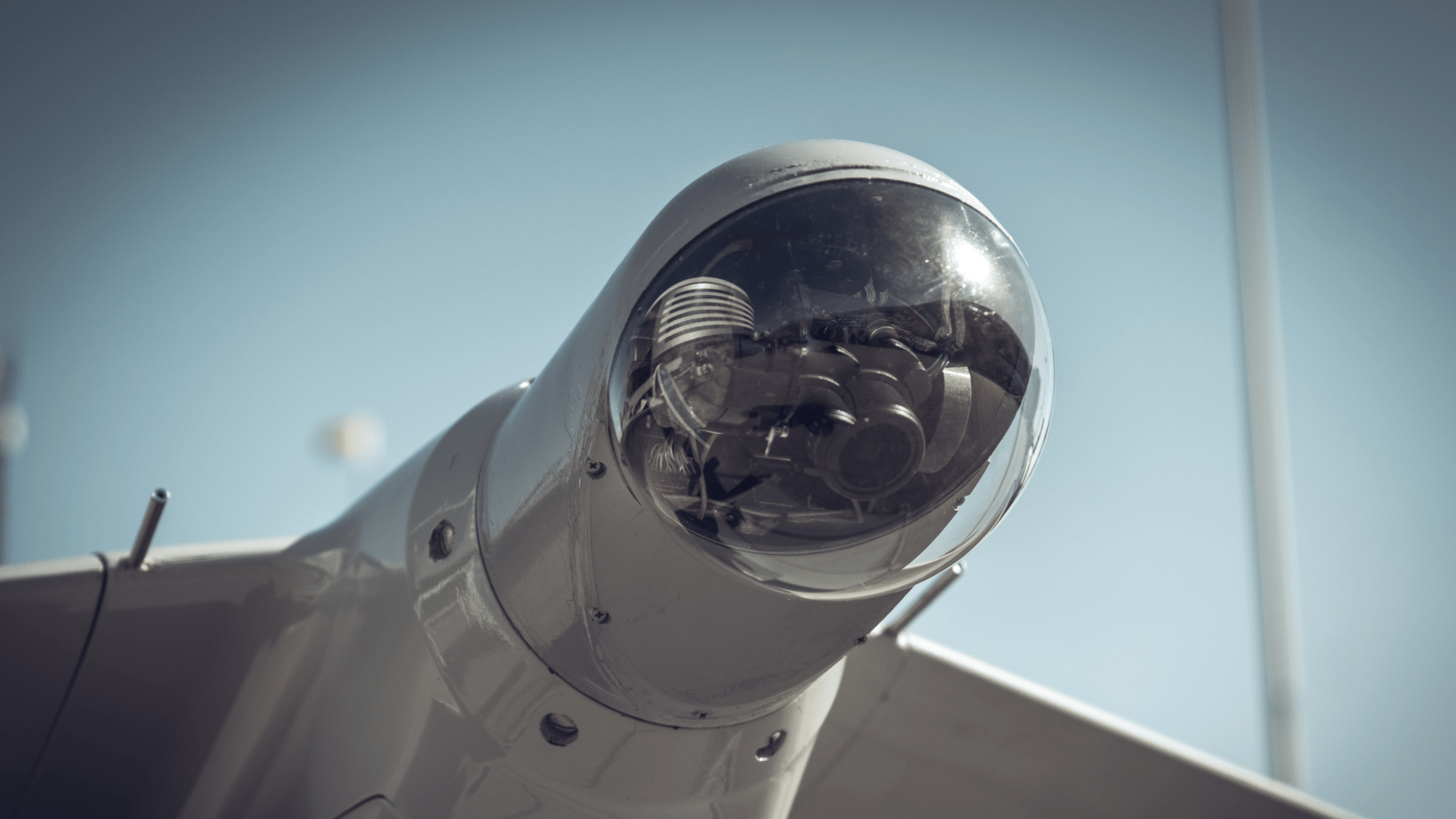
The cost of FLIR systems has seen a dramatic decrease since their initial development. In the early stages, primarily during the mid to late 20th century, the cost was prohibitively high. A basic military FLIR system could cost upwards of $150,000 to $200,000 in the 1960s and 1970s. As the technology advanced, the cost of these high-end military-grade FLIR systems could easily reach into the millions. For example, a cutting-edge system used for an aircraft could cost up to $2 million in the late 1980s to early 1990s.
In the present day, the cost of FLIR technology varies greatly depending on the system’s sophistication and intended use. A simple, consumer-grade FLIR camera designed for personal use can now be purchased for as low as $200 to $500. More advanced cameras for professional applications, such as building inspections or wildlife research, can range from $1,000 to $5,000.
High-end military and industrial-grade systems, which have superior resolution, range, and sensitivity, remain expensive but have seen a significant reduction in cost compared to their historical counterparts. These can range from $10,000 for a ground-based system to $100,000 or more for sophisticated airborne systems. For comparison, a modern military-grade FLIR system for an aircraft, offering advanced features and capabilities, would cost around $500,000 to $1 million, representing a substantial cost decrease relative to the equivalent systems of past decades.
Real Scenarios and Police Use
FLIR technology has been instrumental in numerous police operations, providing critical assistance in situations where visibility is a challenge. Here are some real-world scenarios where police have utilized this technology effectively.
Search and Rescue:

In 2017, police in Lincolnshire, England, used a drone equipped with FLIR technology to locate and rescue a man who had been missing for six hours in freezing temperatures. The thermal imaging capabilities of the drone allowed the police to quickly locate the man in a six-foot deep ditch in the middle of a farmland, a task which would have been virtually impossible in the darkness without the assistance of FLIR.
Detection of Suspects:
In 2021, a police department in Arlington, Texas, used FLIR technology to track a assault suspect who had fled on foot. Arlington police used thermal imaging technology on a drone to find a man hiding on top of a storage building who was suspected of assaulting a woman.
Hostage Situations:
In 2009, police in Arlington, Texas, used FLIR technology to manage a hostage situation. After receiving a domestic disturbance call, they arrived at a scene where a man had barricaded himself inside his house and taken a hostage. Using FLIR, they were able to monitor the situation inside the house, providing them with valuable information that helped resolve the situation safely.
Detection of Indoor Marijuana Cultivation:
FLIR has also been used in detecting illegal indoor marijuana farms. The heat emitted from the high-intensity lights required for such operations can be easily picked up by FLIR technology. In 2001, the U.S Supreme Court ruled on the case of Kyllo v. United States, setting a precedent that using FLIR technology to detect heat emissions from a home constitutes a “search” under the Fourth Amendment.
Vehicle Pursuits:
In 2014, police in Queensland, Australia, used a helicopter equipped with FLIR technology to pursue a vehicle that had failed to stop for a roadside check. The car was successfully tracked from the air using the FLIR system, leading to the arrest of the driver.
Frequently Asked Questions About Forward Looking Infrared (FLIR)
Forward Looking Infrared (FLIR) technology and traditional infrared imaging systems both operate on the principle of detecting infrared radiation, which is emitted by all objects based on their temperature. However, there are some key differences between the two:
- Sensitivity: FLIR systems are typically more sensitive than traditional infrared imaging systems. They can detect smaller differences in temperature, which allows them to create more detailed thermal images.
- Orientation: As the name suggests, FLIR systems are designed to look forward, which makes them particularly useful in applications like navigation and surveillance. Traditional infrared imaging systems, on the other hand, may not be specifically designed with this orientation in mind.
- Application: FLIR technology is commonly used in military and law enforcement for tasks such as night vision, surveillance, and target detection. Traditional infrared imaging, on the other hand, has a wider range of applications, including building inspections, medical imaging, and scientific research.
- Technology: FLIR systems typically use a technology called “staring array,” which allows them to continuously monitor a scene without having to mechanically scan it. Traditional infrared imaging systems, on the other hand, often use “scanning array” technology, which requires the detector to mechanically scan the scene.
- Cost: FLIR systems are generally more expensive than traditional infrared imaging systems, due to their higher sensitivity and more advanced technology.
It’s important to note that the terms “FLIR” and “infrared imaging” are sometimes used interchangeably, and the specific differences between systems can vary based on the manufacturer and model. For the most accurate information, it’s best to refer to the specifications of the individual systems in question.
The primary applications of Forward Looking Infrared (FLIR) in military and civilian contexts are quite diverse due to its ability to detect heat signatures, which can be useful in a variety of scenarios. Here are some of the main applications:
Military Applications:
- Surveillance and Reconnaissance: FLIR systems are often used in military aircraft, drones, and ground vehicles to conduct surveillance and reconnaissance missions. They can detect heat signatures from enemy vehicles, personnel, or installations, even in complete darkness or adverse weather conditions.
- Target Acquisition and Tracking: FLIR can be used to identify and track targets based on their heat signatures. This can be particularly useful in situations where visual identification is difficult or impossible.
- Navigation: In low visibility conditions, such as at night or in fog, FLIR can be used to navigate by detecting the heat signatures of landmarks or obstacles.
Civilian Applications:
- Search and Rescue: FLIR can be used to locate missing persons in low visibility conditions by detecting their heat signatures. This can be particularly useful in wilderness search and rescue operations or after natural disasters.
- Law Enforcement: Police and other law enforcement agencies can use FLIR for a variety of purposes, such as tracking suspects, conducting surveillance, or investigating crime scenes.
- Firefighting: Firefighters can use FLIR to see through smoke and locate hotspots in fires. This can help them to more effectively combat fires and rescue individuals.
- Building Inspections: FLIR can be used to detect heat loss in buildings, which can help to identify areas of poor insulation or other energy efficiency issues.
- Medical Imaging: In some cases, FLIR can be used for non-invasive medical imaging. For example, it can be used to detect inflammation or other changes in body heat that may indicate a medical condition.
- Wildlife Observation: FLIR can be used to observe wildlife, particularly at night when many animals are most active but difficult to see with the naked eye.
Forward Looking Infrared (FLIR) technology works by detecting infrared radiation, or heat, rather than visible light. This allows it to function effectively in low-light conditions and even in complete darkness.
Every object that isn’t at absolute zero temperature emits some level of infrared radiation. The amount of radiation an object emits increases with its temperature, so warmer objects emit more infrared radiation than cooler ones. FLIR sensors detect this radiation and use it to create a “thermal image” or “heat picture” of the environment.
In low-light conditions, where traditional cameras or the human eye would struggle to see, FLIR can still detect the heat signatures of objects. This allows it to identify and track objects based on their heat signatures, even if they are not visible to the naked eye.
FLIR can also be effective in adverse weather conditions. For example, it can see through fog or smoke, which can obscure visible light. This is because the wavelengths of infrared radiation that FLIR detects are less affected by such atmospheric conditions than visible light.
However, it’s important to note that while FLIR is less affected by adverse weather conditions than visible light imaging systems, it’s not completely immune to them. Heavy rain or snow, for example, can absorb or scatter infrared radiation, reducing the effectiveness of FLIR. Similarly, objects with the same temperature as their surroundings can be difficult to detect with FLIR. Despite these limitations, FLIR still offers significant advantages in low-light and many adverse weather conditions.
A Forward Looking Infrared (FLIR) system is composed of several key components that work together to detect infrared radiation and convert it into a thermal image. Here are the main components and their roles:
- Infrared Detector: This is the heart of the FLIR system. The detector is made up of an array of pixels, each of which is sensitive to infrared radiation. When infrared radiation strikes a pixel, it heats up and changes its electrical properties. This change can be measured and used to determine the amount of infrared radiation striking each pixel.
- Optics: The optics in a FLIR system focus the incoming infrared radiation onto the detector. These optics must be made from materials that are transparent to infrared radiation, such as germanium, since common optical materials like glass are not.
- Cooling System (for cooled detectors): Some FLIR systems use cooled detectors, which are chilled to very low temperatures. This increases their sensitivity to infrared radiation, but also makes the systems more complex and expensive. The cooling system can include components like a cryocooler and a Dewar flask to insulate the detector.
- Signal Processing Electronics: The signal from the detector is sent to the signal processing electronics. These electronics convert the signal into a digital format and apply various algorithms to enhance the image, correct for noise, and compensate for changes in the detector’s temperature.
- Display: The processed signal is sent to a display, which converts the digital data into a visible image. The display often uses false color or grayscale to represent different temperatures, with different colors or shades of gray representing different levels of infrared radiation.
- User Controls: FLIR systems also include user controls to adjust settings like the gain and level of the image, the color palette used, and the focus of the optics.
These components work together to create a thermal image. The optics focus incoming infrared radiation onto the detector, which measures the radiation and sends a signal to the processing electronics. The electronics convert the signal into a digital format and enhance the image, which is then displayed to the user. The user can adjust various settings to optimize the image for their specific needs.
The resolution of Forward Looking Infrared (FLIR) sensors significantly impacts the quality and accuracy of the thermal imagery produced. The resolution of a FLIR sensor is determined by the number of detector elements, or pixels, in the sensor array. Each pixel corresponds to a point in the field of view of the sensor.
- Image Detail: Higher resolution sensors can provide more detailed images because they have more pixels to represent objects in the field of view. This can make it easier to identify and distinguish between different objects in the image. For example, a person’s face might be recognizable in a high-resolution thermal image, but appear as just a blob in a low-resolution image.
- Temperature Accuracy: Higher resolution can also improve the accuracy of temperature measurements. This is because each pixel in a FLIR sensor measures the average temperature of the area it represents. If the sensor has more pixels (i.e., higher resolution), each pixel represents a smaller area, so the average temperature is likely to be more accurate.
- Minimum Detectable Temperature Difference: Higher resolution sensors can typically detect smaller differences in temperature. This is because the noise in the sensor, which can obscure small temperature differences, is spread out over more pixels.
However, higher resolution FLIR sensors are typically more expensive and may require more processing power to handle the larger amount of data they produce. Therefore, the choice of resolution often involves a trade-off between cost, performance, and the specific requirements of the application.
While Forward Looking Infrared (FLIR) technology provides significant advantages in various applications, it also comes with certain challenges. Here are some of them, along with the ways modern systems address these issues:
- Temperature Similarity: Objects with similar temperatures can be hard to distinguish using FLIR. This is because FLIR creates images based on temperature differences. Modern systems address this by using advanced image processing algorithms that can enhance contrast and highlight subtle differences.
- Atmospheric Interference: Certain atmospheric conditions, such as heavy rain, fog, or snow, can interfere with FLIR’s ability to detect infrared radiation. Modern FLIR systems use advanced signal processing techniques to reduce the impact of atmospheric interference and improve image quality.
- Cost: High-resolution FLIR systems, especially those using cooled detectors, can be expensive. The development of uncooled detectors, which are less expensive and require less maintenance, has made FLIR technology more accessible. Additionally, advances in manufacturing and economies of scale have helped to reduce costs.
- Size and Weight: Traditional FLIR systems could be quite large and heavy, limiting their applications. Advances in technology have led to the development of compact and lightweight FLIR systems that can be used in a wider range of applications, including handheld devices and drones.
- Power Consumption: FLIR systems, particularly those with cooled detectors, can consume a significant amount of power. This can be a challenge for battery-powered applications. The use of uncooled detectors and advances in power management technology have helped to reduce the power consumption of modern FLIR systems.
- Complexity of Use: Interpreting FLIR images can be challenging due to the different way they represent the world compared to visible light images. Modern FLIR systems often include user-friendly features, such as color palettes that can be easily understood, and image enhancement features that make it easier to interpret the images. Some systems also include training modes or guides to help new users learn how to interpret FLIR images.
Yes, Forward Looking Infrared (FLIR) technology can be used for non-invasive medical applications. It’s important to note that while FLIR can provide valuable data, it’s typically used as a supplementary tool in medical contexts, rather than a standalone diagnostic method. Here are some potential uses in the healthcare industry:
- Disease Detection: Certain diseases can cause changes in body temperature, which may be detectable with FLIR. For example, inflammation or infection can cause localized increases in skin temperature.
- Vascular Assessment: FLIR can be used to assess blood flow in the skin, which can be useful in diagnosing conditions like Raynaud’s disease or in monitoring the healing of wounds.
- Breast Cancer Screening: Some studies have explored the use of FLIR for breast cancer screening. The idea is that cancerous tissues may have different thermal properties than normal tissues due to increased blood flow. However, this application is still under research and is not currently a replacement for traditional methods like mammography.
- Fever Screening: FLIR has been used for mass fever screening in situations like the COVID-19 pandemic. It can provide a quick and non-invasive way to check body temperature, although it’s not as accurate as a medical-grade thermometer.
- Diabetic Neuropathy: FLIR can potentially help in detecting diabetic neuropathy, a condition that affects the nerves in the feet and legs, causing loss of sensation. The affected areas often show different heat patterns which can be detected by a thermal camera.
- Thermal Pain Imaging: Research is being conducted on using FLIR technology to visualize pain, as areas of chronic pain might exhibit different thermal patterns.
It’s important to note that while these applications have potential, many are still in the research stage and should not replace traditional diagnostic methods without further validation. Always consult with a healthcare professional for medical advice.
FLIR technology, as offered by companies like us at SPI Corp, has seen significant advancements over the years, improving in areas such as sensitivity, resolution, size, cost, and power consumption. Here are some of the latest advancements in the field:
- Off-the-Shelf Midwave Infrared Imaging Systems: SPI Corp and other companies have started offering off-the-shelf midwave infrared (MWIR) imaging systems. These systems can reduce development time and make advanced FLIR technology more accessible to a wider range of applications.
- Improved Thermal Sensitivity: Modern FLIR cameras have seen improvements in thermal sensitivity, leading to higher detection accuracy. This can be particularly important in applications like surveillance or target tracking, where the ability to detect small temperature differences can be critical.
- Integration with Machine Vision: FLIR technology is being integrated with machine vision systems, which can provide additional context and improve the interpretation of thermal images. Machine vision has made significant advancements in recent years, and its integration with FLIR technology is a promising area of development.
- MicroCalibir Platform: The MicroCalibir platform is a result of the latest advances in FLIR technology integration. This platform represents ongoing development and innovation in the field, further expanding the potential applications and benefits of FLIR technology.
These advancements are helping to make FLIR technology more effective, more accessible, and more versatile.
Cooled FLIR Sensors:
Cooled infrared detectors are typically contained in a vacuum-sealed case and cryogenically cooled to very low temperatures. This cooling significantly reduces thermal noise and allows the sensor to detect smaller differences in infrared radiation, resulting in higher sensitivity and better image quality.
Advantages:
- Higher sensitivity: They can detect smaller differences in temperature, which can be critical in certain applications.
- Faster response times: They can detect rapid temperature changes quickly.
- Longer range: They can detect infrared radiation from farther away, making them suitable for long-range surveillance applications.
Disadvantages:
- Cost: Cooled sensors are more expensive to produce and maintain.
- Size and weight: The cooling system adds to the size and weight of the sensor.
- Lifespan: The mechanical parts of the cooling system can wear out over time, reducing the lifespan of the sensor.
- Power consumption: The cooling system requires a significant amount of power.
Uncooled FLIR Sensors:
Uncooled infrared detectors operate at ambient temperatures, eliminating the need for a cooling system. They use a sensor material that changes its electrical resistance in response to changes in temperature.
Advantages:
- Cost: Uncooled sensors are less expensive to produce and maintain.
- Size and weight: Without a cooling system, these sensors can be smaller and lighter.
- Lifespan: Without mechanical parts to wear out, uncooled sensors can have a longer lifespan.
- Power consumption: Without a cooling system, these sensors consume less power.
Disadvantages:
- Lower sensitivity: Uncooled sensors are typically less sensitive than cooled sensors, so they may not detect small differences in temperature as effectively.
- Slower response times: They may not detect rapid temperature changes as quickly as cooled sensors.
The choice between cooled and uncooled FLIR sensors depends on the specific requirements of the application. While cooled sensors can provide better performance, uncooled sensors are often more than adequate for many applications and offer significant advantages in terms of cost, size, weight, lifespan, and power consumption.
Forward Looking Infrared (FLIR) technology plays a crucial role in search and rescue operations, surveillance, and border security efforts due to its ability to detect heat signatures, even in low visibility conditions. Here’s how it assists in these areas:
- Search and Rescue Operations: In search and rescue missions, especially in challenging conditions such as at night or in dense forests, FLIR technology can be invaluable. It can detect the heat signatures of humans or animals, making it possible to locate lost or missing individuals even in complete darkness or obscured environments. FLIR technology can also be used to map out hotspots in the aftermath of a disaster, such as a forest fire or earthquake, aiding in the strategic planning of rescue efforts.
- Surveillance: FLIR technology is widely used in surveillance systems to monitor sensitive areas, such as around critical infrastructure or private properties. It can detect intruders based on their heat signatures, even in complete darkness or adverse weather conditions. This makes it a powerful tool for maintaining security in a wide range of scenarios.
- Border Security: In border security, FLIR technology can be used to detect unauthorized crossings. As it can operate in low-light or adverse weather conditions, it provides an advantage over traditional surveillance methods. Vehicles or individuals attempting to cross a border illegally can be detected based on their heat signatures, allowing for timely response by security forces.
In all these applications, FLIR technology provides a critical advantage by enabling operations to continue in conditions where other technologies would fail, such as in darkness or poor weather. This makes it an invaluable tool in ensuring safety, security, and effective response in critical situations.
